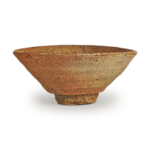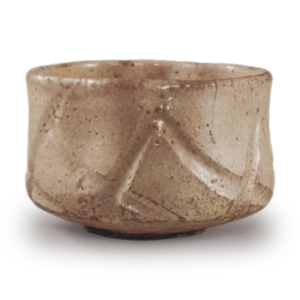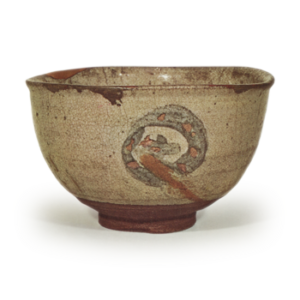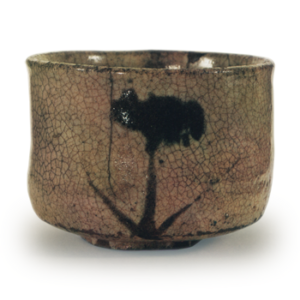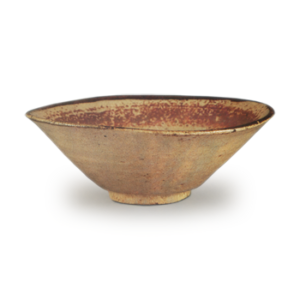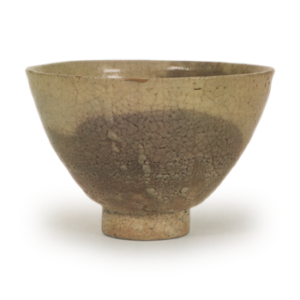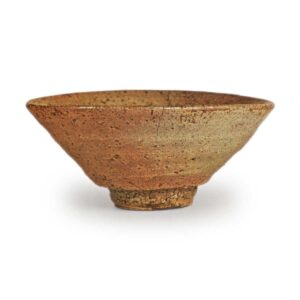
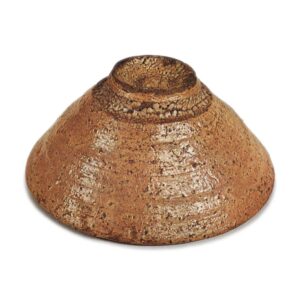
Meibutsu
Height: 6.1 to 6.8 cm
Diameter: 14.8 to 15.0 cm
Outer diameter of foot ring: 4.7 to 5.0 cm
Height of foot ring: 1.1 to 1.2 cm
The overall shape is slightly thin, and the rim to the mouth is well-proportioned and shows four levels of the potter’s wheel marks. The rim is deeply incised, and the kaeragi (a pattern of concentric lines) is also clearly visible, giving the piece a strong appearance.
The glaze on the outside is also in a half-and-half pattern, with one side being a loquat-colored and the other side being more bluish, and the glaze is generally thin. The inside is also divided into blue and loquat colors, and there are four marks left on the inside.
When I took the photographs, I held both the Yama-no-I and Kumoi bowls in my hands at the same time, and the Yama-no-I was slightly more compact and smaller than the Kumoi. The Yama-no-I had a bulge in the body, whereas the Kumoi was more linear in shape, and in terms of the overall impression of the tea bowl, the Yama-no-I seemed to be a cut above. However, in terms of elegance, Unkei is by no means inferior, and in fact it has a dignity that is not inferior to that of the other.
The excellence of this tea bowl is also outstanding in the workmanship of the foot ring, with its glaze showing off the even grains of the kaaragi (Japanese lacquerware technique) and the foot ring, which is carved to look like a bamboo joint, being quite dignified and well-balanced overall.
It was used at the tea ceremony held on April 10th and 11th, 1923 to commemorate the 13th anniversary of the death of Kosetsu Fujita, and the combination of the items used was as follows
Floor: Four large characters of “Manpo-Yui-Shiki” written by Seigan Kosho
Flower arrangement: Iga-mimi-tsuki flowers, white camellia and flowers
Tea container: Soho Yamashina, tea scoop: Noshizakura, tea caddy: Karamono-katatsuki, inscribed: “Yahaku
Tea bowl, Aoido, Inscription: Unkei, Replacement: Nonkou Shiho, Inscription: Yamamado
.
On the inside of the lid of the box is the inscription “Unkei”, and on the reverse side of the lid is a poem by Jochu-no-Kami Sanemune from the “Chisaishu” anthology, which reads “If you gaze upon the waves of the Harima-gata Suma, you will see that the clouds are the property of Unkei”. The tea bowl was owned by a money-exchange merchant in Osaka named Hakusan Soichi, who was also a calligrapher. The outer box was made after the tea bowl came into the possession of the Fujita family, and it is decorated with a gold lacquer design of wisteria vines on a Shunkei lacquer surface.

